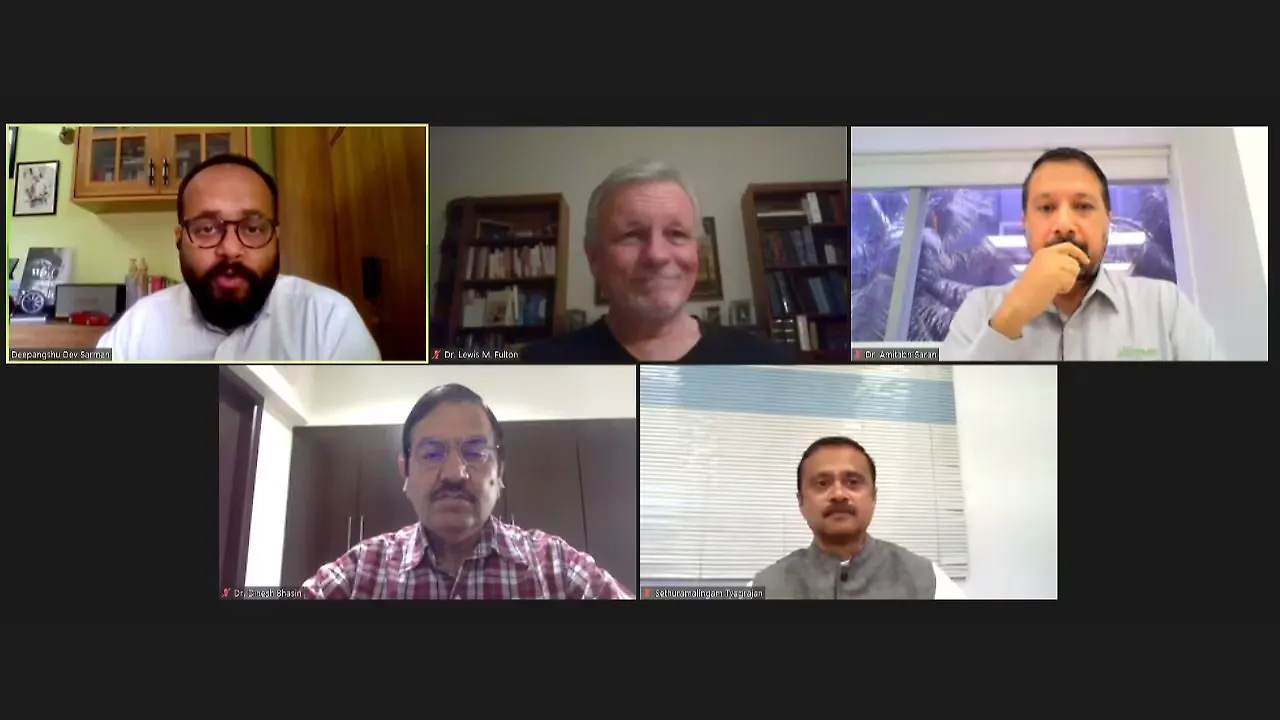
“Focusing on multiple alternate fuel solutions concurrently pose huge challenges for development as it involves complex technology, expansion solutions and strategising product mix,” said Sethuramalingam Tyagarajan, General Manager - Power Systems Engineering, Engineering Research Center, Tata Motors, has said.
Delivering his presentation at the Dialogue on Multi Fuel Mobility focusing on Energy Safety in Automotive, conducted by Mobility Outlook along with the Centre for Auto Policy & Research (CAPR), Tyagarajan said there is no clarity on the fuel for the future because of the diversity of alternate fuel types available.
Moderating the webinar, Deepangshu Dev Sarmah, Editor, Mobility Outlook, noted that the Indian Government had set a target of reducing carbon footprint by 20-30% by 2030. To achieve this, electrification of transportation has been a major focus.
Dr Dinesh Bhasin, Former VP-Customer Care (Global), Tata Motors, said that electrification will cause a major shift in the automotive supply chain. During the BS-6 era, which started in 2020, the sales chart indicated that the sales for alternate fuels, including EV and CNG, increased on the back of diesel sales. While EVs may not immediately address vehicular pollution issues, they are certainly a key enabling step towards the ultimate vision of clean energy.
Tyagarajan also emphasised that the need of the hour is to develop alternate transportation solutions to fossil fuels.
Dr Lewis M Fulton, Director, STEPS (Sustainable Transportation Energy Pathways), University of California Davis, explained that challenges faced by countries are on which vehicle fuel to bank on for the future, but 'for the next few years, we will see multiple fuel options co-exist'.
Citing the example of the US, he said light-duty 4Ws and 2Ws will see electrification, while the heavy-duty truck segment is likely to see hydrogen as the fuel option. 'In aviation and maritime, biofuel possesses good opportunities like bio-kerosene and bio-jet fuel. We have to look at the best fuel mix to head towards a sustainable future,' he added.
Ensuring Safety
Dr Amitabh Saran, CEO, Altigreen Propulsion Labs, from an EV maker’s perspective, explained that maintaining SOPs for safety on the internal and external sides is the most important thing in EV safety. “There’s a growing need to innovate in terms of safety with the upcoming of EVs,” he added.
He further said it is more about finding the right components and using them as per the use case. The inherent problem is not cells; rather, the products should be based on the cells used.
In the Indian context, Dr Bhasin mentioned that there are too many players mushrooming; however, they need to take customer centricity and safety seriously. Besides, adhering to regulatory guidelines and internal SOPs is a must, he added.
In addition, blockchain connectivity, including cloud integration, especially for 2Ws, along with inter/intra-industry collaborative approach for cost optimisation and technological developments in the EV space, are also required from the OEM side.
In addition to the OEMs, Dr Bhasin also recommended that mass customer education and large-scale distribution (network) development for battery charging/ swapping infrastructure is also required to see a mass-scale adoption of these types of vehicles.
Serviceability The Key Factor
Dr Saran noted, 'As OEMs and component manufacturers, we will need to make sure that serviceability is of utmost importance. It will have to start at the component level.' He added that the software will be a huge differentiator for EVs as they are like computers on wheels. Like computers, in EVs, boxes of ICs will need to be replaced for servicing, he said.
The OEMs and component manufacturers will need to make sure that serviceability is of utmost importance starting at the component level, he added.
“There'll be many challenges and questions on servicing and range of EVs,” Dr Bhasin said. In EVs, with the absence of an engine, the servicing cost will come down. However, as the number of electronic components is high, there is a need to retrain the service people, he added.
Schools, colleges and Universities will have to relook at what they are teaching about vehicles. There would be a need for the Government to look at the course and studies around new-age vehicles, especially 2Ws, he recommended.
Conclusion
The industry's direction towards electrification is correct, but the speed and safety need to be picked up, voiced the experts.
“Overdesign is an absolute imperative in our country,” said Dr Saran, while responding to a question on how Altigreen is ensuring safety of batteries and Battery Management System (BMS). The choice of cells, placement of different systems are very important, he said, and none can overlook the other as these systems are more sensitive.
In his concluding remarks, Dr Fulton said that the industry must look for the best fuel mix to head towards a sustainable future. The current mix of ethanol will allow everyone to keep the vehicles in stock condition, but the new fuels will need new systems to be produced and manufactured, he said.
On this, Tyagarajan noted that depending on the fuel mix, OEMs need to calibrate their engines as a lower level of blending would require fewer changes to the engine.
Speaking on the uncertain future, Dr Bhasin explained that although positive work is being done on the EV front, there are doubts whether these vehicles will be truly carbon neutral as looking at the energy source is also important.
Dr Saran concluded that although future drivetrains will turn electric, the source of energy still remains uncertain.